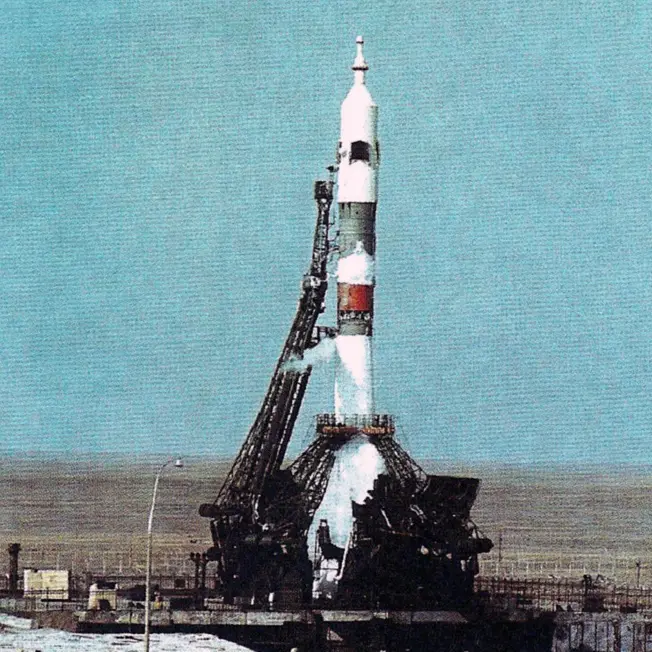Soyuz 1
Launch Success
Liftoff Time (GMT)
00:35:00
Sunday April 23, 1967
Mission Details
Launch Notes
First crewed test flight of Soyuz. After a successful launch, the cosmonaut Vladimir Mikhailovitch Komarov died during the reentry of the Soyuz spacecraft. The spacecraft was named Рубин ("Ruby") by the cosmonaut. Note: Next Spaceflight classifies this as a successful launch, as the failure of the spacecraft was not due to a fault with the rocket.
Soyuz 1
Soyuz 1 (Russian: Союз 1, Union 1) was a crewed spaceflight of the Soviet space program. Launched into orbit on 23 April 1967 carrying cosmonaut Colonel Vladimir Komarov, Soyuz 1 was the first crewed flight of the Soyuz spacecraft. The flight was plagued with technical issues, and Komarov was killed when the descent module crashed into the ground due to a parachute failure. This was the first in-flight fatality in the history of spaceflight. The original mission plan was complex, involving a rendezvous with Soyuz 2 and an exchange of crew members before returning to Earth. However, the launch of Soyuz 2 was called off due to thunderstorms. This is Soyuz's 3rd flight, and its 1st crewed flight. The Soyuz is a Soviet crewed spaceship, developed to made manned lunar missions. This version called 7K will fly 4 times on the giant launcher N1, and several tens of times on Proton to fly over the Moon, which will be successful during the mission Zond 4. Soyuz will become the first spacecraft to transport living beings to the Moon during the flight of Zond 5, with two turtles. Subsequently, it is adapted to low orbit and will fly on the Soyuz launcher to serve the Salyut and Mir stations and the ISS.
Low Earth Orbit
1 Payload
6,450 kilograms
Launch Site
Stats
Soyuz
4th
Mission
2nd
Mission of 1967
OKB-1
239th
Mission
20th
Mission of 1967
1967
40th
Orbital launch attempt

